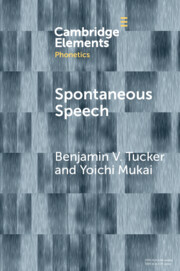Element contents
Spontaneous Speech
Published online by Cambridge University Press: 28 January 2023
Summary
Information
- Type
- Element
- Information
- Series: Elements in PhoneticsOnline ISBN: 9781108943024Publisher: Cambridge University PressPrint publication: 23 February 2023
